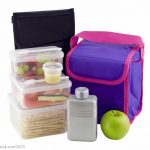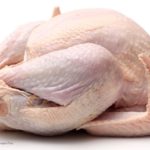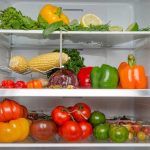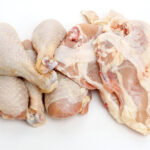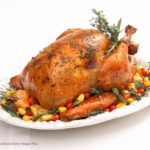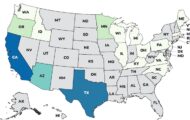Believe it or not it's that time of year again; these back to school lunch safety tips from the USDA will keep your kids healthy all year long. If your child brings a lunch rather than buying lunch at school, these are things you need to know. Children, especially young children, are more likely to have serious consequences from food poisoning, so it's especially important to follow these food safety tips. Dr. Justin Ransom, USDA Food Safety and Inspection Service (FSIS) Administrator said in a statement, "As the school year begins, we want families to keep food safety top of mind, Young children are more vulnerable to foodborne illness, and we want to make sure they stay healthy and ready to learn." First keep cold foods cold. You should use at least two cold sources, such as … [Read more...]
Fourth of July Food Safety Tips From the USDA
Get these Fourth of July food safety tips from the USDA for a happy and safe holiday. This is high season for summer grilling, and there are some things you need to know to keep family and guests healthy. Food safety starts with handling food. If you purchased frozen food, especially meats, for your party, make sure that you thaw beef, poultry, or fish in the refrigerator, in cold water, or in a microwave. Never thaw food on the counter. And remember that when thawing with cold water or the microwave oven, the food must be cooked immediately. Check the package to see if the food is pre-browned or browned but not fully cooked. Some of these foods can seem cooked, but they must be treated as raw food and cooked to a safe final internal temperature. Any product labeled “Cook and … [Read more...]
USDA Withdraws Framework to Reduce Salmonella in Poultry
USDA is withdrawing its proposed framework to reduce Salmonella in poultry. In October 2022, that agency released the framework to reduce Salmonella infections linked to poultry. Food safety advocates were pleased to see this framework and were hopeful it would lead to fewer illnesses and deaths. In that announcement the USDA stated, "The Centers for Disease Control and Prevention (CDC) estimates that Salmonella bacteria cause approximately 1.35 million human infections and 26,500 hospitalizations in the United States every year. Of those infections, over 23% are attributed to poultry consumption." The framework had three key components that, together, supported a comprehensive approach to controlling Salmonella in poultry. They were: Requiring that incoming flocks be tested for … [Read more...]
Protect Yourself in the Wake of Cuts to FDA, USDA, and CDC
Learn how to protect yourself in the wake of cuts to FDA, USDA, and CDC. Today we learned that many scientists and food safety experts have lost their jobs at those agencies. What does that mean to you and your family and how can you protect yourself? You have always been the final piece of the puzzle for food safety. Contaminated food has always been sold; in fact, the government has allowed chicken to be sold when it is contaminated with a certain level of Salmonella, and recalls often come after people have been sickened by contaminated food. So if you are already following food safety precautions you are ahead of the game. First of all, always follow the rule of Clean, Separate, Cook, and Chill. Wash your hands before you start cooking. Start with a clean kitchen and … [Read more...]
Super Bowl Food Safety Tips From the USDA
Get Super Bowl food safety tips from the USDA to make your party the best ever. When you are entertaining, food safety is more important than ever. And you have to consider the health issues and ages of all of the people you invited. If you are getting takeout or having food delivered, make sure that it is quickly refrigerated or placed in the oven until your guests arrive. Pizza, chicken wings, sliders, chili and other favorites can't stay at room temperature for more than two hours, no matter how hot they were to begin with, or bacteria will grow. The danger zone is between 40°F to 140°F. In that zone, bacterial counts can double every 20 minutes. And the same rule applies to chilled foods. Get them back into the fridge after two hours; that time shrinks to one hour if the … [Read more...]
Consumer Reports: USDA Should Strengthen Its Salmonella
Consumer Reports has asked the USDA to strengthen its Salmonella framework to reduce consumer illnesses from poultry. CR has filed a comment letter with that agency, which states that poultry contaminated with Salmonella bacteria above a certain level should be kept off the market and recalled. Chicken accounts for amore Salmonella illnesses than any other food category. And the rate of those illnesses has been increasing over the last ten years. Brian Ronholm, director of food policy at Consumer Reports said in a statement, "Salmonella infections from poultry have increased steadily over the past decade and sicken hundreds of thousands of Americans every year. The USDA’s current performance standards to reduce Salmonella infections from poultry have failed to drive down … [Read more...]
Thanksgiving Turkey Safety Tips From the USDA
Get Thanksgiving turkey safety tips from the USDA, including how to thaw and cook the bird, for a safe holiday. The biggest meal of the year comes with special food safety issues, especially regarding the turkey. The first step is thawing the turkey, if you purchased a frozen bird. Never ever thaw turkey or any meats at room temperature. Turkey can be thawed in the fridge; allow 24 hours for every four pounds of turkey. That means if you bought a 16 pound turkey, you need to allow four full days for thawing. After the turkey is thawed using this method, it can be kept, uncooked, in the fridge for two days. You can also thaw the turkey in cold water. Allow 30 minutes of thawing per pound, and submerge the turkey in its original wrapping. Change the water eery 30 minutes until the … [Read more...]
Memorial Day Food Safety Tips From USDA to Stay Safe
These Memorial Day food safety tips from the USDA will help you and your family stay safe this summer. Summer cooking and parties are prime time for possible food poisoning cases for several reasons. Warmer temperatures and outdoor picnics, parties, and grilling pose special challenges. Under Secretary for Food Safety Dr. Emilio Esteban said in a statement, "The bacteria that cause foodborne illness love the summertime as much as we do because they thrive and multiply quickly in warmer temperatures. This causes illnesses to spike during the summer. As we all spend more time outside, it is important to remember these food safety steps to keep your friends and family safe." First, always wash your hands thoroughly with soap and water before you start cooking and eating. If safe … [Read more...]
Salmonella in Raw Breaded Stuffed Chicken Is an Adulterant
Salmonella in raw breaded stuffed chicken products is an adulterant, according to a policy finalized today by the USDA. These items have been linked to many outbreaks in the United States over the last few years. The proposal was released in April 2023. These items are declared adulterated when they exceed a specific threshold (1 colony forming unit per gram or higher) for Salmonella. This is part of a broader USDA effort to reduce Salmonella illnesses associated with the raw poultry supply. Contamination in other raw poultry products will be addressed later this year. Agriculture Secretary Tom Vilsack said in a statement, "Under President Biden’s leadership, USDA is taking significant steps toward keeping American consumers safe from foodborne illness. This final determination … [Read more...]
Public Health Alert For Catfish Imported From China Issued
A public health alert for catfish imported from China has been issued by the USDA. These fish were illegally imported from the People's Republic of China and are not eligible for import into the United States. No confirmed reports of adverse reactions have been received to date in connection with the consumption of this fish. The frozen Siluriformes products were not certified for export to the U.S. by the government of China as being produced under equivalent inspection, they do not identify a certified establishment number, and they were not presented for import reinspection. These factors make the fish unfit for human consumption. The product is 12 ounce (340 gram) plastic packages containing "FROZEN STRIPED PANGASIUS MAWS." The fish package does not have any establishment … [Read more...]
